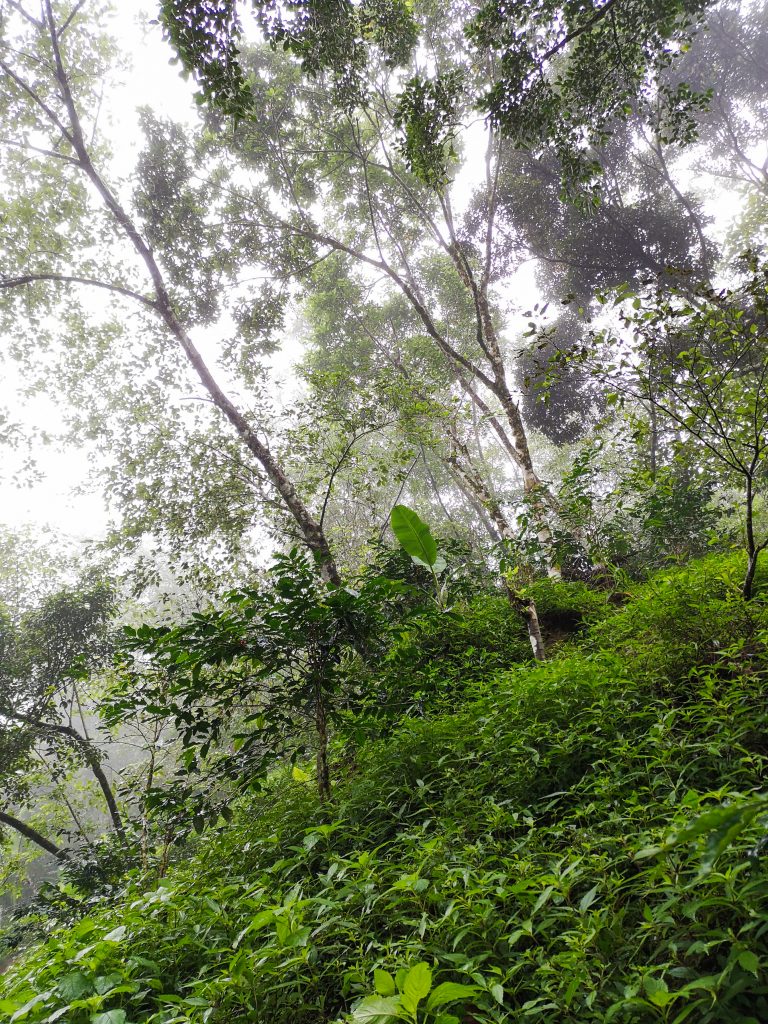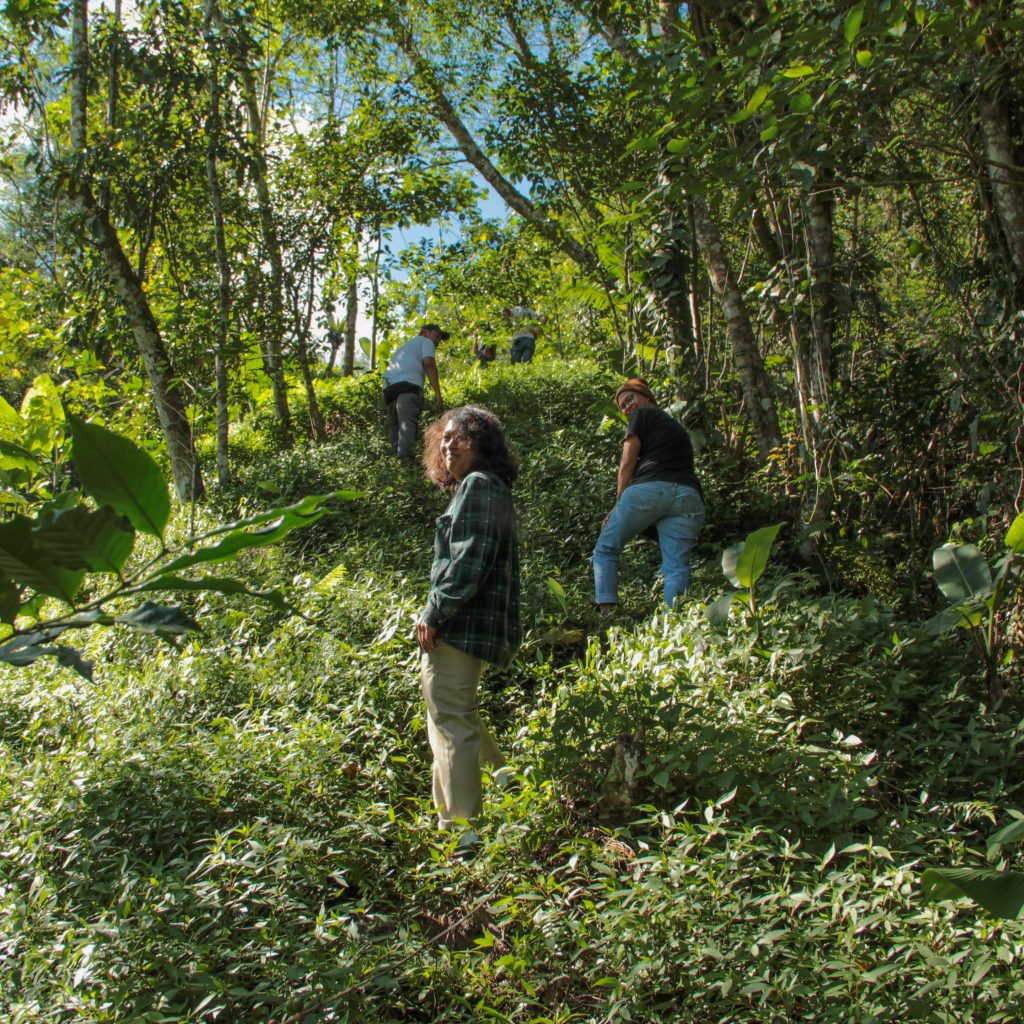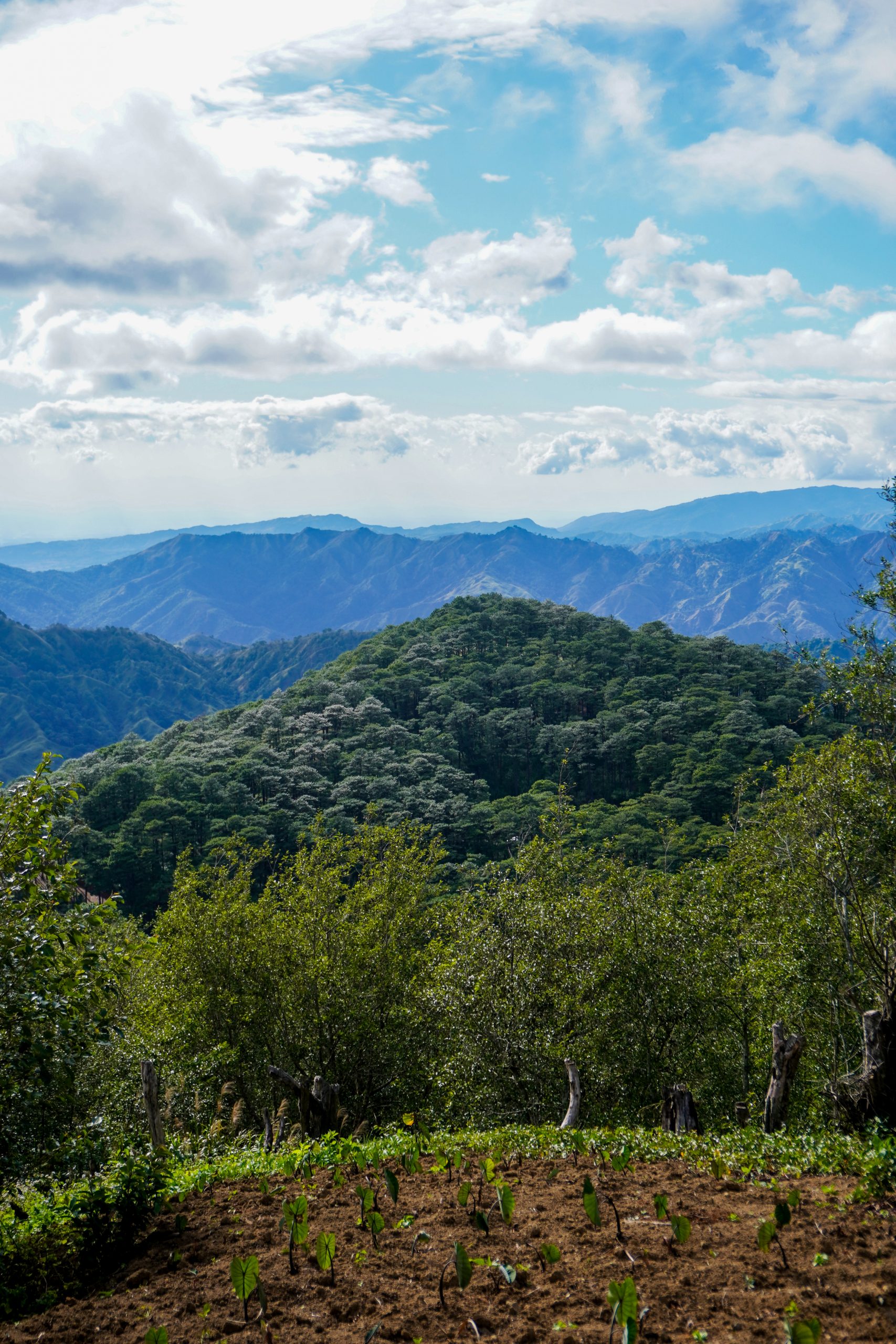This is part 2 of a 5-part series on Shade Grown, agroforsestry coffees.
Soil as a Living System
In a rainforest, soil is not just a growing medium but a living system full of microorganisms, fungi, insects, and organic matter. When coffee is grown through agroforestry inside the forest, it becomes part of this cycle rather than interrupting it. The canopy above contributes constant leaf litter, which decomposes and enriches the ground. Coffee roots share space with countless other plants, drawing on nutrients released through these natural processes. Farmers, like other forest-dwelling species, interact with this living soil by cultivating without stripping it bare.
This approach preserves soil fertility, reduces erosion, and keeps the ground stable. Instead of needing heavy external inputs, the soil sustains itself through the forest’s own cycles of decomposition and renewal.
Water Regulation Within the Rainforest
Rainforests regulate their own water. Dense vegetation intercepts rainfall, slowing its movement and allowing it to seep into the ground. Streams and rivers that originate in forested areas are naturally buffered against sudden flooding and drought. Agroforestry coffee farms, being part of the forest, contribute to this regulation.

The canopy and understory reduce surface runoff, while coffee plants help hold soil in place. Water infiltrates slowly, replenishing groundwater and feeding springs that supply surrounding communities. Farmers depend on these cycles just as the rest of the ecosystem does, and their farming practices reinforce rather than disrupt the hydrological balance.
Climate Buffering Through Forest Cover
The rainforest canopy shapes its own climate. Trees regulate temperature by shading the forest floor, releasing moisture through transpiration, and maintaining humidity. When coffee grows within this environment, it benefits directly from these microclimatic conditions. Coffee plants avoid the stress of extreme heat, while stable humidity supports consistent flowering and fruiting.
By maintaining canopy cover, agroforestry coffee farms keep these natural buffers intact. Farmers are not imposing an artificial system but sharing the stable climate that the forest generates. In turn, the continued presence of coffee helps justify keeping the forest standing, ensuring the climate regulation benefits extend across landscapes.
Carbon Storage and Global Impact
Forests are crucial for carbon storage. Trees capture and hold carbon dioxide, reducing greenhouse gas levels in the atmosphere. Agroforestry coffee inside rainforests strengthens this role. The combination of canopy trees, understory vegetation, and coffee plants creates multiple layers of carbon storage.
Farmers contribute by avoiding deforestation and allowing the forest to continue absorbing carbon. In this way, coffee cultivation is not a source of emissions but part of a climate solution. Every hectare maintained as forested agroforestry is a hectare that continues to sequester carbon for the planet.

Local and Global Synergies
In Luzon and across the Philippines, where deforestation has eroded watersheds and destabilized soils, agroforestry coffee sustains critical ecological functions. It keeps soil alive, regulates water, buffers climate, and contributes to carbon storage. For farmers, these benefits mean healthier crops and more reliable harvests. For the wider community, they mean clean water, stable weather, and reduced risk of floods or landslides. Globally, they contribute to climate regulation that affects every region of the world.
Conclusion
Soil, water, and climate are inseparable elements of rainforest health. Coffee grown through agroforestry within these forests reinforces natural processes rather than undermining them. Farmers are participants in the cycle, cultivating in a way that maintains fertility, regulates water, stabilizes climate, and locks away carbon. Each harvest is linked not only to the well-being of local communities but also to the stability of ecosystems that sustain life everywhere.

